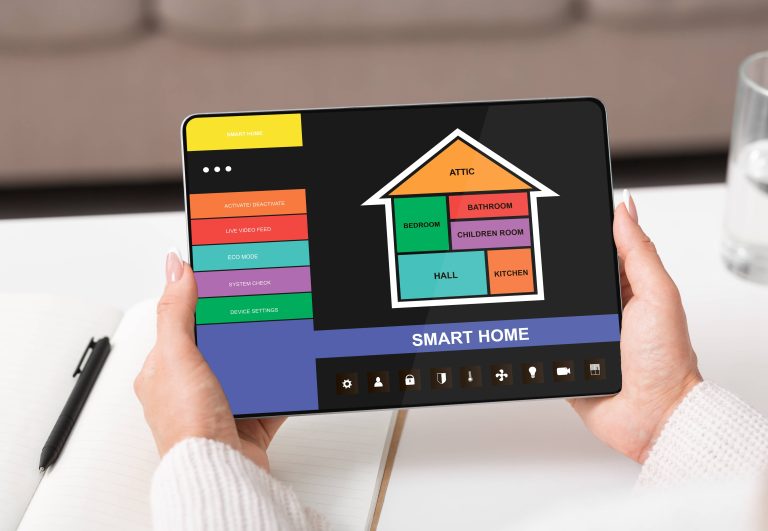
As the era of smart technology continues to advance, homeowners are increasingly integrating smart devices into their everyday routines to enhance comfort, security, and convenience. At the heart of this integration lie smart home systems, which can be broadly categorized into cloud-based and local (or on-premises) systems. While both systems aim to streamline and automate household operations, they come with distinct benefits and drawbacks that can influence a homeowner’s decision. This blog post delves into the advantages and disadvantages of cloud-based and local smart home systems to help you make an informed choice.
Cloud-Based Smart Home Systems
Cloud-based systems leverage the internet to store, manage, and access data. Major players like Amazon Alexa, Google Home, and Apple HomeKit epitomize cloud-based smart home ecosystems where devices and commands are managed through cloud servers.
Advantages:
1. Remote Access: One of the standout benefits of cloud-based systems is the ability to control devices from anywhere with an internet connection. Whether you’re at work, on vacation, or merely in another room, cloud-based systems provide unparalleled convenience in managing your home remotely.
2. Ease of Setup: Cloud-based systems are generally user-friendly and relatively easy to set up. With straightforward app interfaces and guided instructions, homeowners can quickly get their devices up and running without needing advanced technical knowledge.
3. Integration and Compatibility: These systems often boast extensive compatibility with a wide range of smart devices. Cloud platforms such as Alexa and Google Home typically support hundreds, if not thousands, of third-party devices, making it easier to build a cohesive and interconnected smart home environment.
4. Scalability: Adding new devices and features to a cloud-based system is usually seamless. As manufacturers release new smart products, cloud-based systems often receive updates that enable compatibility with cutting-edge technologies, ensuring your smart home evolves with technological advancements.
Disadvantages:
1. Dependence on Internet Connectivity: Cloud-based systems require a stable internet connection to function properly. Internet outages can render smart devices inoperable or limit functionality until connectivity is restored, posing a significant inconvenience.
2. Privacy and Security Concerns: Transferring data through the cloud raises privacy and security issues. While companies invest heavily in securing their servers, data breaches and hacking incidents are not unheard of. Sensitive information related to your home’s operations could potentially be exposed.
3. Ongoing Costs: Some cloud-based services require subscription fees for premium features or additional storage. Over time, these costs can add up, making cloud-based systems potentially more expensive in the long run than their local counterparts.
4. Latency Issues: Since commands need to travel to a cloud server and back, there can be slight delays in execution. In situations where immediate action is necessary—such as turning off an alarm or unlocking a door—this latency can be a drawback.
Local Smart Home Systems
Local smart home systems, on the other hand, store data and execute commands solely within the home network, often utilizing a central hub or controller. Products from companies like HomeSeer and Hubitat exemplify local smart home solutions.
Advantages:
1. Increased Privacy and Security: By keeping data within the home network, local systems offer greater control over privacy and reduce exposure to potential cloud vulnerabilities. This autonomy can be a significant advantage for homeowners concerned about data breaches.
2. Reliability: Local systems do not rely on external internet connectivity to function, making them more reliable during internet outages. As long as the local network is operational, smart home devices remain functional.
3. Reduced Latency: The absence of the need to relay commands to a distant server greatly minimizes latency. Actions are processed quickly and locally, ensuring immediate response times which are crucial for certain applications.
4. One-Time Investment: Local systems typically involve a one-time purchase of hardware and software, with fewer ongoing costs. These systems can be more cost-effective over time as they do not usually require subscription fees.
Disadvantages:
1. Complex Setup and Maintenance: Setting up a local smart home system can be technically demanding, requiring a certain degree of expertise to configure and maintain. Troubleshooting issues may also prove challenging without specialized knowledge.
2. Limited Remote Access: While some local systems offer remote capabilities, these often require complicated setups like VPNs (Virtual Private Networks), which can be cumbersome for the average user. Remote control is generally not as seamless compared to cloud-based systems.
3. Compatibility and Integration: Local systems may face limitations in device compatibility and integration. While they can work with a variety of devices, they might not support as wide a range as cloud-based platforms, possibly restricting the diversity of your smart home ecosystem.
4. Scalability Issues: Adding new devices and adjusting to technological advancements can be more complicated with local systems. They may require additional hardware upgrades or software configurations that demand time and expertise.
Conclusion
Choosing between a cloud-based smart home system and a local system hinges on your specific needs and priorities. If seamless remote access, ease of use, and broad device compatibility are high on your list, a cloud-based system might be the way to go. However, if data privacy, reliability during internet outages, and lower long-term costs are more critical, then a local smart home system could be a better fit.
Ultimately, both systems have their own set of advantages and disadvantages. Assessing your smart home requirements, technical skill level, and how much you value data privacy versus convenience can guide you toward making the right choice for your home. Whatever your decision, the goal remains the same: creating a smarter, more efficient, and comfortable living space.







